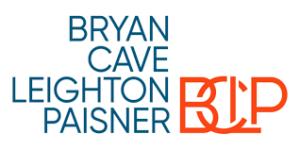Remaking News of the Week: Case study in analytics
Today in Remaking News of the Week, I am sharing a case study in analytics featuring the work of Bryan Cave Leighton Paisner (BCLP) first reported in the Legal Executive Institute Forum magazine.
 For many years BCLP has leveraged data in its data-driven approach to decision- making for the internal management of the firm, optimizing the delivery of legal work to clients and understanding the content and risks in clients’ legal portfolios.
For many years BCLP has leveraged data in its data-driven approach to decision- making for the internal management of the firm, optimizing the delivery of legal work to clients and understanding the content and risks in clients’ legal portfolios.
Authors Chris Emerson, BCLP’s Chief of Legal Operations Solutions and Bruce Braude, newly appointed Chief Technology Officer at Deloitte Legal, say this comprehensive data-driven approach has been enabled by professionals in data analysis, financial analysis and planning, process engineering and software engineering working closely with the lawyers. They describe a range of BCLP’s applications of data to enhance its legal service delivery.
Rate setting. They created an algorithm using 24 metrics that explained 94% of the variability in the final decided rate for each fee-earner. The aim was to reduce the time taken to complete the annual rate-setting process
Rosetta narratives. The firm’s metrics-only lawyer performance reports often created more questions than they answered. The solution was a narrative version of the performance reports “to identify trends, root causes and relationships that would explain the themes to the lawyers in action-oriented language”. This technology is used annually for partner practice health reports and throughout the year on outstanding invoices, helping partners prioritize their collection efforts.
Clients’ litigation portfolios. An example stemming from the 2008 financial crisis cites a financial institution with a significant body of mortgage litigation. BCLP sought to estimate accurately the remaining life in the litigation portfolio and use the information to reduce costs and select the optimal attorney team. “The optimized staffing suggested by the model allowed clients to realize significant cost savings over traditional approaches and, in the end, the portfolio’s remaining life closely mirrored the model’s predictions.”
Quantifying Legal Process Improvement. An insurance company with significant litigation portfolio spend could not understand why its spend was so high compared to other similar portfolios. BCLPs’ legal operations group’s analysis showed how 30% of the spend could be avoided by changes to operational processes such as eliminating manual reporting processes that had since been replaced with conference calls.
These examples should inspire all who are wondering why there’s so much noise about data analytics in legal services.


Leave a Reply